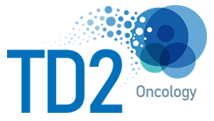Drug research has advanced in remarkable ways, but it’s still about the basics: ensuring safety, efficacy and compliance. That trio is no easy feat, but without a strong clinical strategy, even the most promising, safe and compliant drug can fail. Get your research in better strategic shape with this quick-start plan:
The 3 Prongs of Smart Clinical Strategy
No clinical strategy is complete without considering these factors:
1) Know the Drug
Before crafting a go-to-market plan, take time to fully understand the ins and outs of the project. Poke holes in the plan before the market does. Question everything: How does the drug work from a scientific perspective? What happens if everything goes right? What happens if everything goes wrong?
2) Know the Disease
You’ll also need to fully understand the genomic context of sensitivity for the targeted tumor. Find what makes the disease particularly vulnerable to the drug, and pounce on it. What’s the kill spot? What patient tumors have it? Craft a clear action plan to find patients with those genomic traits, and ensure they are enrolled in the trial.
3) Know the Market
It’s not just about what the market looks like now—it’s about what the market might become. Think opportunistically about the best way to execute on your New Drug Application strategy amidst a sea of competition, but never forget what the science supports.
By the end, you’ll have a strong strategy grounded in sound science and smart thinking—focus on identifying the context of vulnerability from preclinical data and patient observation, and then match the drug to that specific context.
Easy Ways to Think Strategically
Need help approaching concepts in a more strategic way? Try these tips:
1) Build Checks and Balances
Plan preclinical work with ample endpoints (and flexibility to change course mid-stream in real-time) to determine: if the drug works as expected, the role of potential biomarkers and the ideal patient population(s) that would benefit.
2) Abandon Bias
Be open to new things, like using community oncology clinics as research sites. They may not be your first choice, but they often have talented researchers and a strong enrollment history.
3) Take New Tangents
The science might take you unexpected places. Go with it, especially for indications. You might be surprised to find a partial or complete response where you didn’t think you would. Adapt in real-time to run with the evidence.
Ready to get started? If you’re not meeting your goals the way you’d like, we can help. We create custom-crafted, proven clinical strategies for our clients that are both actionable and differentiating.


